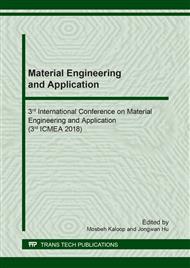p.104
p.110
p.115
p.120
p.126
p.131
p.137
p.144
p.150
Bond Behavior of Tension Bar at Lap Splice of SCC Beam
Abstract:
This paper investigates the bond strength of tension lap splice in the ordinary concrete (OC)beam and self-compacted concrete (SCC) beam. A total of six beam specimens were cast for thebending test. Results indicate that the SCC beam and OC beam present similar bond strength at thelap splice of tension bar. Current code for the tension lap splice is available for the SCC beam. Bothof the SCC and OC beams with transverse stirrups could have ductile flexural behavior in the regionof tension lap splicer. Only minor spalling between reinforcing steel and concrete was found underservice loading, such that the corrosion resistance of the tension lap splice in the SCC and OC beamscould be preserved.
Info:
Periodical:
Pages:
126-130
Citation:
Online since:
November 2018
Authors:
Price:
Сopyright:
© 2018 Trans Tech Publications Ltd. All Rights Reserved
Share:
Citation:


